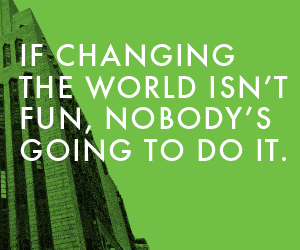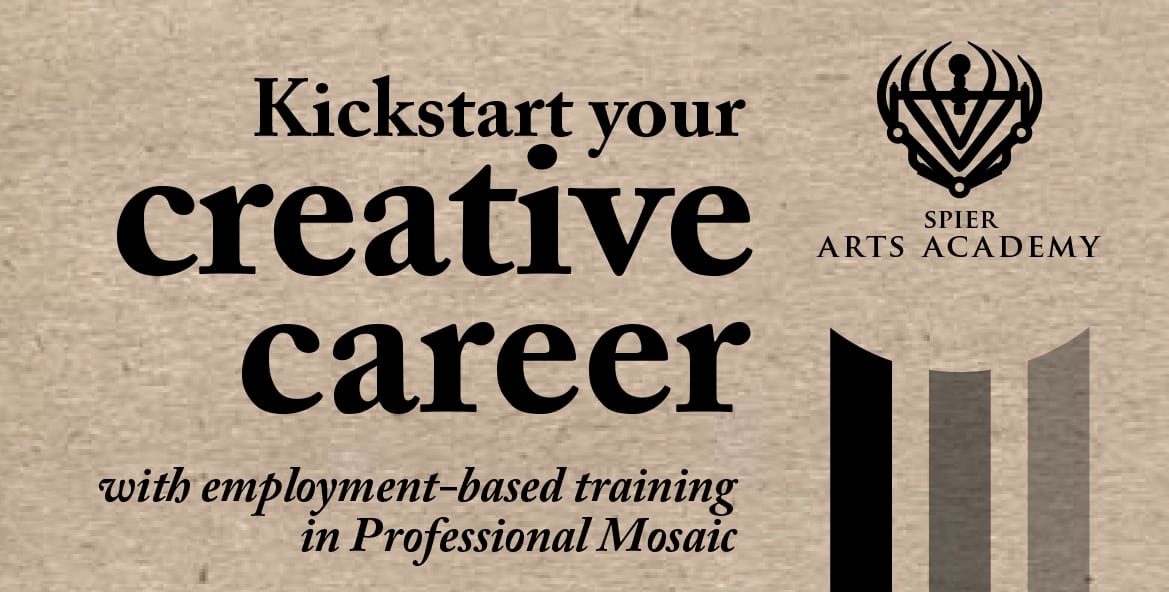Rene Rietmeyer (1957, Netherlands) is about “Time-Space-Existence”. Rietmeyer creates “Boxes”: abstract, three-dimensional objects, which are presented mostly on the wall in multi-part, variable installations. Rietmeyer dedicates himself to making visible the subjectively felt effect of cities and landscapes, as well as of persons.
This comes about with the purely abstract formal means of color, form, material, surface structure, composition and the installation in space. His work is about expressing his own existence, about living a conscious life and creating an awareness about existence in others. As he says: “Ultimately, my work is nothing other than the proof of my existence.” In 2002, he initiated PERSONAL STRUCTURES. Currently, his installation “Hong Kong” is presented at the PERSONAL STRUCTURES exhibition as part of the 2013 Venice Biennale, at Palazzo Bembo. —Rene Rietmeyer lives in Venice, Italy.
Rene Rietmeyer, Hong Kong, 2012. Oil paint on wood, 40x40x20cm. Toshikatsu Endo, Untitled, 1990. Burned wood and copper, 350cm. Installation view at Palazzo Bembo, Venice Biennale 2013. Photo: Global Art Affairs Foundation
Sarah Gold: Since you were a young man, you have always created as much as possible your own life. Planning carefully your direction and how you live your life. You have told me that you regarded your decision to become a contemporary artist as “an intellectual challenge”. Could you describe this “challenge” and do you have the feeling that you “succeeded”?
Rene Rietmeyer: In 1994, after having been for 9 years the director of a private art academy, I still had no idea what contemporary art is about. I just did not understand it. Then, 36 years old, I finally managed to let go of managing the academy and I dedicate all my time to trying to discover what contemporary art actually is about. I expected and hoped for contemporary art to be mainly an intellectual achievement. I therefore thought that understanding this and becoming able, me myself, to create contemporary art, would be very much an intellectual challenge. It seems however, that a large part of the people involved in the art world do not really seem to care about serious intellectual thoughts in contemporary art. It might be because we live at least the last 30 years in a society where we are all well fed and have a lot of time left over, that many people had the possibility to somehow survive while creating items they like to call “art”, without real contents. While several other ‘artists’ continued, corrupted by money, to make items they themselves do not even believe in anymore. In reality I found only very few artists who really take contemporary art as a mainly intellectual challenge. But those who do, were and are very interesting personalities. Taking some of these respected international artists as a standard to measure myself, I have to come to the conclusion that I feel as if I myself “succeeded”, but it did take me more than 12 years of intense occupation and confrontation, with artists and contemporary art, to come to this feeling.
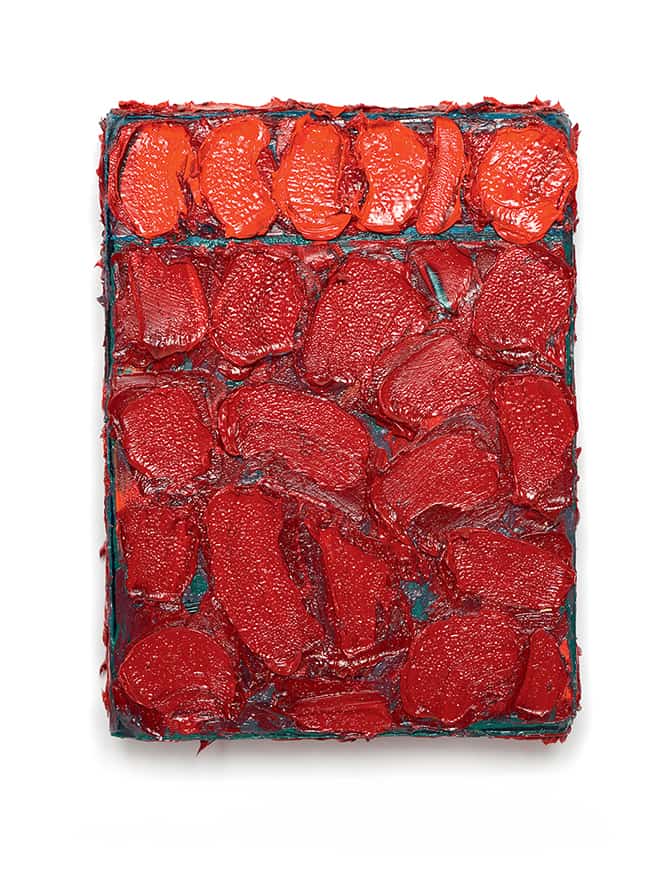
Rene Rietmeyer, Côte d’Azur, 2010. Oil paint on wood, 28x21x7 cm. In this series there have been made a total of 100 Boxes.
SG: After you had ‘established’ yourself as an artist you initiated PERSONAL STRUCTURES. Knowing how much of your time, energy and money you invest in this project, could you tell why and how you came to creating this ‘open platform’?
RR: I felt that if I would continue to focus only upon my own personal career as an artist that, with my own ‘unspectacular’ art, I would never be able to reach a lot of people. It is my goal to reach as many people as possible with a message about consciously living a life, and at the same time somehow financially survive myself, while having an interesting life. Bringing many different artists together creates a certain dynamic and by doing so I will be able to reach many more people than by being alone. I might therefore myself not become very well known as an artist, but I will reach the maximum possible regarding my main goals.
Karlyn De Jongh: With PERSONAL STRUCTURES you have chosen for a standpoint of documenting different opinions and ways of expression. In the past, when you first started the project with 16 young artists, you chose artists expressing themselves in a visually similar way. However, in 2008 after experiencing Toshikatsu Endo talk extensively about Hermann Nitsch at our Tokyo symposium about Existence, you decided to open up the project and give a platform also to artists who are visually so very different. Why did you do this?
RR: In the beginning years of PERSONAL STRUCTURES I focused by the participating artists, besides the contents of their works, also on the visual homogeneity within the project. This however excluded several artists who had very interesting thoughts but “unusual” approaches by expressing them. Although I had started in 2007 to include artists in our exhibitions whose works had a different appearance, it really was only after Toshikatsu Endo’s lecture in 2008, that I re-thought my original concept and opened the project also to artists concerned with Time-Space-Existence, but now regardless the visual appearance of the art work resulting from that confrontation. Claiming that the homogeneity in the project is now not any longer in the visual appearance of the art works but, more importantly, solely in the topics they deal with.
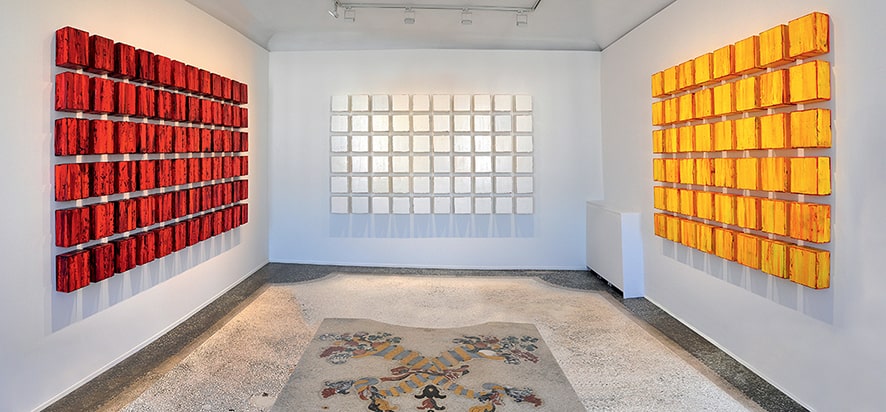
Rene Rietmeyer, “EL HIERRO, Spain, February 2011”, “Portrait of JK and Rome 2010” and “Naples, Italy, May 2010”, 2011. Installation view at Palazzo Bembo, exhibition PERSONAL STRUCTURES, 54th Venice Biennale 2011. Photo: Global Art Affairs Foundation. Courtesy: Rene Rietmeyer.
KDJ: Recently we went to visit Michelangelo Pistoletto in Biella, Italy, and spoke about his project ‘Love Difference’. With initiating PERSONAL STRUCTURES as an artists’ platform, thereby documenting different opinions, you seem to be a living ‘model’ for someone who loves difference. What do you hope to find or hope to achieve with PERSONAL STRUCTURES?
RR: So many different humans, with so many different points of view, often believing that they are the only ones who see it right. Documenting as many as possible well fundamented visions about the subjects Time-Space and Existence, by trying to stimulate the discussion and awareness about these topics. In addition I would like to try to make more people see that beauty is in the difference and not necessarily in that what reflexes one’s own opinion.
Valeria Romagnini: Looking at your work from your early career until your recent works, it seems as if you have created a personal inventory of your experiences. One can travel the world and perceive different atmospheres as suggested by your series. Your works are reactions upon a particular space in a particular moment in time, which could possibly also be seen as sequences of different moments following one other over time. However, having lived these moments, the perception probably will be different and these moments have become part of your memory, your consciousness, your awareness. How do you consciously perceive time? RR: Looking back I remember the many homes in the Netherlands where you sat in the totally silent living room and you could hear the clock loudly ticking the seconds away. This feelings has not left me ever since, I feel the seconds that I am alive ticking away. It is a linear passing of time, sometimes it feels to tick faster, sometimes slower, but it does not stop, my life time keeps ticking away, in seconds, days, years. It is not a nice feeling, but that consciousness is the driving thought behind my restlessness to achieve, to experience, just as long as I am still alive. Fortunately thereby creating an accumulation of memories, consciously lived moments of time passing expressed in my works.
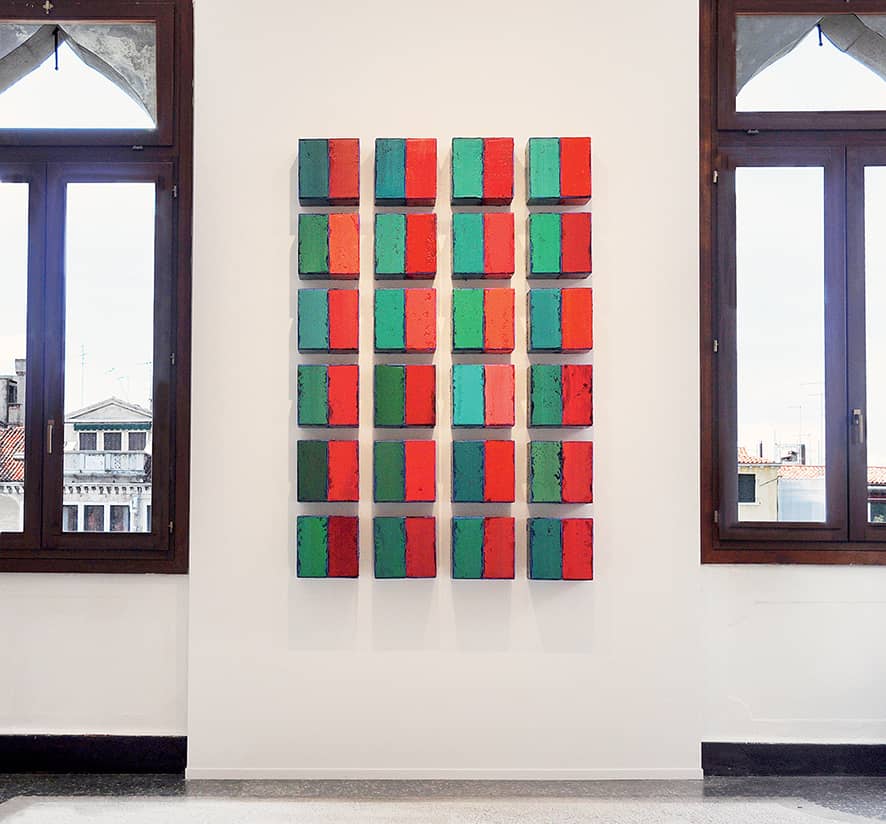
Rene Rietmeyer, PORTRAIT OF S AND K, FEBRUARY 2011, 2011. Oil paint on wood, 25x25x12 cm. In this series there have been made a total of 24 Boxes. Photo: Global Art Affairs Foundation
SG: Looking at your earlier works, your series were often much frailer, softer, more ‘human’. Now your works have become more ‘hard’; the size of your boxes is in general larger, the Box itself much more ‘perfect’ and they feel ‘stronger’. Could you explain this development, this change?
RR: Please do not mix frailer and softer, with more “human”, I am just as “human” today. But, especially in the 1990s, I was carefully searching; I am not so bold and reckless as I often see by American artists. Art-History was in the way. For over 5 years now however, having been able to have many direct confrontations and comparisons with artists that once seemed so far away, I feel very strong regarding my own work and the thoughts within. I know for myself where I stand, I know my materials, know what I want, no need for carefulness anymore and in addition, my project and my private life, living my life as a total, gives me especially in the last years great pleasure, this probably also shows.
KDJ: During our visits to artists such as Hermann Nitsch and Lee Ufan, we have often discussed the influence of their culture on their work. You stated that would Nitsch have been born in, for example, the Netherlands, he would probably not have come to his Orgien Mysterien Theater. To what extent are the ideas that you proclaim and the works you create a ‘logical’ consequence of the culture you are brought up in?
RR: Without any doubt cultural influences have an immense impact upon our own thoughts and actions, our works. The combination of my inherited dispositional properties with the surroundings in which I grew up had so much influence upon “what I want” that the way in which I express myself in my art works can only be seen as the “logical consequence” of all these factors. In short: “me” is how I express myself.
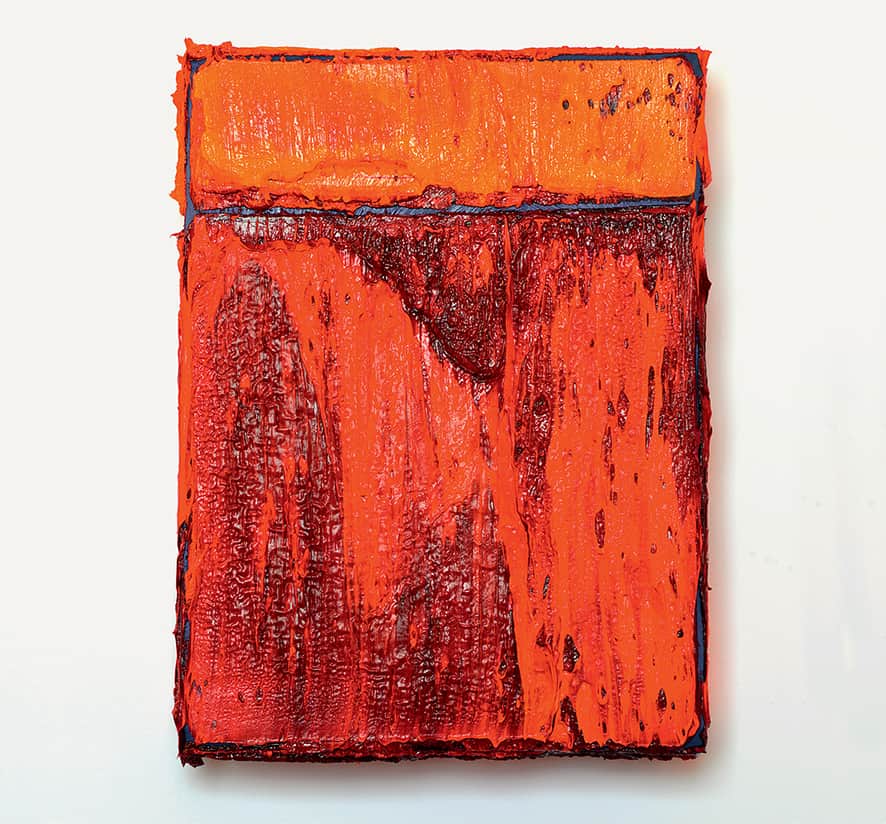
Rene Rietmeyer, Côte d’Azur, 2011. Oil paint on wood, 28x21x7 cm. In this series there have been made a total of 28 Boxes. Photo: Global Art Affairs Foundation
KDJ: You paint your works sometimes even almost a year after the actual happening. For me, there is a difference between a fresh memory and a memory of something that happened a long time ago: through time I tend to forget aspects of the experience. Your Napoli 2010 Boxes that you showed at the 2011 Venice Biennale, were actually painted a few weeks before the opening of the Biennale in May 2011. It seems your Napoli 2010 is influenced by how you were at the moment of painting. Why do you not ‘double date’ your works?
RR: All my works are of course also influenced by my momentary state of being on the moment of execution. Sometimes more, sometimes less. Yes, dating my works is a question which occupied me for a while until I decided that; the moment in which the main part of the thoughts about how a possible execution of a possible work could look like were made, is the moment in time that counts. However, this is not easy to establish and without measuring exactly, I continue to date my work with the date of the actual experiencing of the subject. Double dating would however be more accurate. However, I never liked to give it much effort, to sign, title, number and date my works, it are the collectors who value this, not me.
VR: In 2012 you showed me the wall in Antibes, where Nicolas de Staël might have jumped to his death, and the place where you lived in Vallauris, next to the Picasso Museum. While spending time in the South of France you started to have more freedom and courage in the use of colors and soon after your works became more 3 dimensional, they really became your Boxes. Also for Matisse the South of France had a very important impact on his work. The brightness and the strong powerful saturated colors impressed him and he started to use blocks of color, therefore he stated, “the kilogram of green is greener than half a kilogram of green”. What does color mean to you and why do you create often such a very material surface?
RR: Yes, Matisse was right, it is not only the color itself which has an enormous impact upon how we perceive, but also the amount of color, the opaque presents of the material color can add an enormous power in expressing emotions. Whenever I have the financial means and it “fits” to the subject, I like creating an opaque surface, it is a lot of me in there.
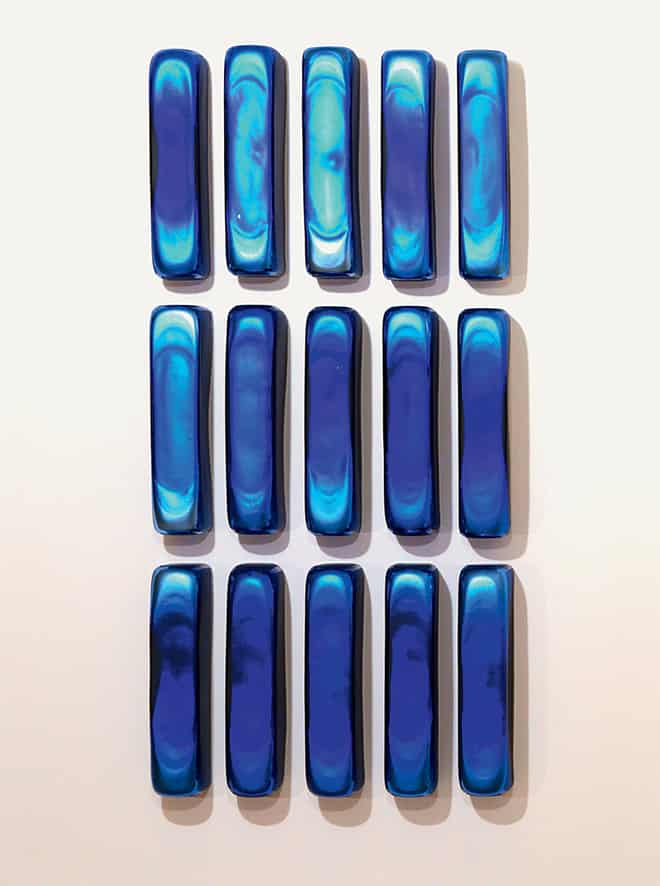
Rene Rietmeyer, VENEZIA JUNE 2010, 2010. Murano glass and silver, 48x11x16 cm. In this series there have been made a total of 103 Boxes. Photo: Global Art Affairs Foundation
VR: When looking at your works since the beginning of your career, while it seems that oil paint and wood are your favorite materials to work with, you have used so far a wide range of different materials: glass, wood, concrete, silicon, acrylic, glue, steel, ceramic. What are the characteristics that bring you to the choice of a certain material? Are there other materials you would like to try out and use?
RR: I am not so sure about how personal or how universal my emotional response to certain materials are but, it is obvious for me that each material has very specific qualities which I can use in order to achieve a certain perception. So has for example acrylic paint for me a more superficial, artificial character than oil paint and glass a colder feeling than corten steel. Unfortunately, I lately did not have the right circumstances to experiment with new materials, but I hope that I will once have the opportunity and subject by which I can use lead in combination with oil paint and wood.
VR: Your boxes transport your emotional relationship with different subjects and your work expresses your emotions, thoughts and feelings towards certain persons you met and places you visited in the world. If you should consider the option of creating a self-portrait of you at this moment in time, what kind of emotional and intellectual thoughts would you express? How would it look like?
RR: I have been dealing with these questions often but I never answered these questions but, OK. Today I am a wooden cubic, 40x40x40 cm, a hard edge slightly sanded, strong present size, dark blue/alizarin crimson red, thick, opaque pallet knife, honest and strait forward oil paint surface, stable deep colors and not fragile yet.
KDJ: The last few years, except for your glass-Boxes, you have always made your works with the same materials. Although the ‘subjects’ that are indicated with the titles seem so very different, your series Oman 2012, El Hierro 2011 and your 2010 Kosuth-Boxes are all ‘oil paint on wood’ and are also very close to each other in their shape and size. Am I right in thinking there is a shift of focus taking place? That in expressing your relation to a certain subject, ‘you’ are becoming more and more present in your works rather than ‘your subjects’?
RR: I do not think that it is to a great extend my own personality who shows more and more, also not in the choice of oil paint as material. One of the main reasons why I have mainly worked with oil paint in the last years is unfortunately that, since I left Miami and the Netherlands, I do not have the same two large studios anymore. Since the last 4 years I focused mainly on establishing a home for my project here in Venice, Italy. I could hardly work and my studio here is only 20 square meter. For the glass and ceramic works I used assistances, and these works were not made in my studio. But, it is how it is, my works become according who I am on that particular moment in time, with the resources and within the possibilities that I have. I continuously change, my works will fortunately change again.
KDJ: Except for your Miami Beach and Côte d’Azur series, the colors you choose for your Boxes are often quite ‘basic’. I mean that they are often either red, yellow or blue, and there seems to be not much difference between the colors—the red from your El Hierro Boxes is quite similar to that of your Shark Valley Boxes; the yellow of Prague is comparable with the yellow of Napoli. Why is that? Do all ‘formal elements’ with which you express yourself, have a similar importance to you or are there some that you favor over others?
RR: I also noticed that the last few years I often use, as you put it, “basic” colors. I think this influence upon the color choice for my series says more about me than about the subject matter of that particular series. In earlier years I have made many series with, as I call them, “in between” colors, but somehow I seem to have a tendency to what I feel as “stronger” colors, whereby in my opinion there still are large differences even between the one strong red El Hierro and the other Shark Valley. These differences do not show well in print, but very well by displaying the works next to each other. Similar to that I only once made a box with a curved side. For me, Color, Shape, Texture, Material and Size are not all equally important, color for example has unavoidably for me always a big impact, texture less, but have there own importance, I cannot neglect one of them, and it hurts when I have to admit (often years after) that I probably choose wrong.
VR: In the 2013 PERSONAL STRUCTURES exhibition during the Venice Biennale, you will present a new installation in a space shared together with the presentation of the Japanese artist Toshikatsu Endo. How do you think the two presentations will fit together within the space?
RR: I have exhibited once before, in Vienna, in a direct confrontation with a work by Endo and I had the feeling that we did not reach the wished for result. So, we are trying again. Although visually so different, I am the opinion that there are many similarities between Endo, his work, and me and my work. The work of Endo, for our joined square room, has been decided upon some time ago already. Knowing this I created a work from which I hope it will make its own strong statement, as Endo does, and that at the same time the two works together will create an excellent strong room installation. Being both about human existence, presenting both modified three dimensional wooden objects, he round, I square, he fire and copper, I red paint, he on the floor, I the wall, two mature men from such different cultural backgrounds presenting themselves and, when we are not satisfied with the result, we will separate us, the works, again.
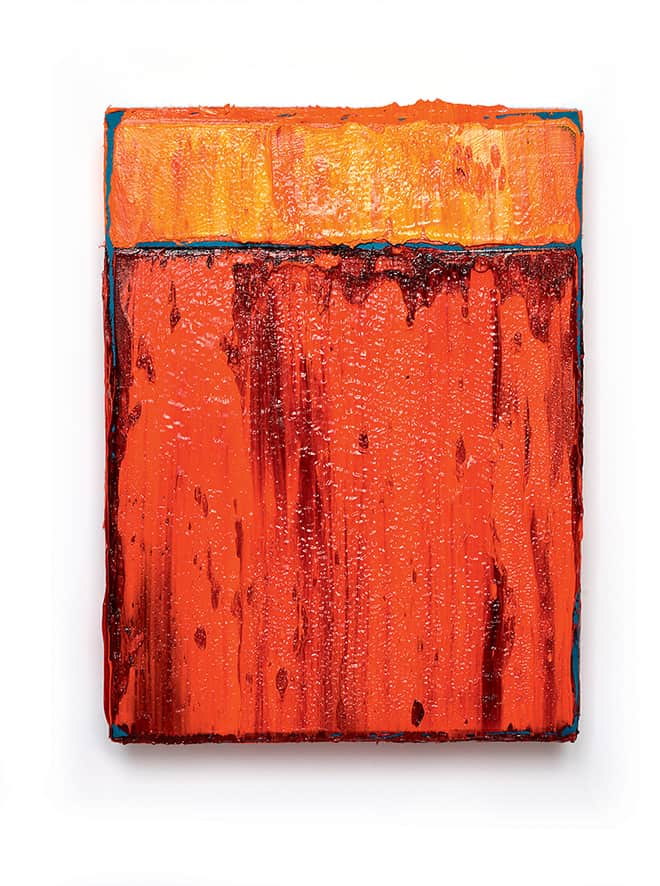
Rene Rietmeyer, Côte d’Azur, 2011. Oil paint on wood, each Box 28x21x7 cm. In this series there have been made a total of 28 Boxes. Photo: Global Art Affairs Foundation
SG: As a person, you are all about Awareness; Awareness of our own existence, our surroundings, and our life-time. Why do you think, you developed this special heightened consciousness?
RR: Seeing so many people dying around me and at the same time knowing that there will be no life after death, forces you to take being alive very serious. Knowing that a life-time is very short makes you realize that every day alive is an important day and therefore should be an interesting beautiful day.
KDJ: In regard to this statement “Ultimately, my work is nothing other than the proof of my existence”. What exactly constitutes your existence? What makes you ‘you’?
RR: The creation of the “me” is a complex biological, social and psychological process. This obvious starts with the genes on which we have no influence, then we receive cultural influences from our surroundings and in a later stage we can add our “own” influences in ourselves, self reflex ion and carrying out the consequences of that awareness can be of great impact. All these and several other influences eventually create the “me”, but only as long as I am still alive. When I die, only my body is left over and also that will disintegrate, “me” seizes to exist.
KDJ: Last year all of us visited Botswana together. On one of these days, we went to a ‘water hole’, a place where animals come to drink, and stayed there the whole day, just sitting in the car and watching the different animals. It was very impressive for me to experience the speed of life from these animals and we discussed also about that we, humans, should, would, do better—live happier—if our speed of life would be slower. Seeing you work, I have the feeling this is not really possible for you. It seems you are more like Arnulf Rainer, who is now 83 and only slower than he used to be because of limiting physical power. Would you ever seriously consider slowing down with all the consequences that it may have for your life?
RR: What I want from life has been all my consciously lived life the same, health, intense personal relations, discovering people and the world, a positive influence on my surroundings, an interesting profession, etc. and in that order, but also somehow balanced according my personal needs. I wanted to create a project larger then myself, and in order to achieve that I had to put my artist-ego by side and work in a to high speed. In order to achieve anything significant these days, it seems that one cannot “afford” to slow down. Rainer, 83, by not slowing down, sacrificed many of the things that I value, I, 55, do not want to do the same, to live a fulfilled live according to my ideas, I will have to slow down and focus again on all important aspects of live.
SG: Since you are a young man, for you “seeing the elephants” has been a metaphor for ‘living a life’. Always there has been this ‘goal’ in life. Now, you have seen the elephants, what will come next?
RR: Seeing the elephants has for me always had the symbolic meaning of going out there and discovering the world. I always will remember Rauschenberg who regretted that he could not discover more because he was running out of time. I know I will eventually also run out of time, so, I have to hurry up and continue to discover many more “elephants”. “Living a life” should never stop.
